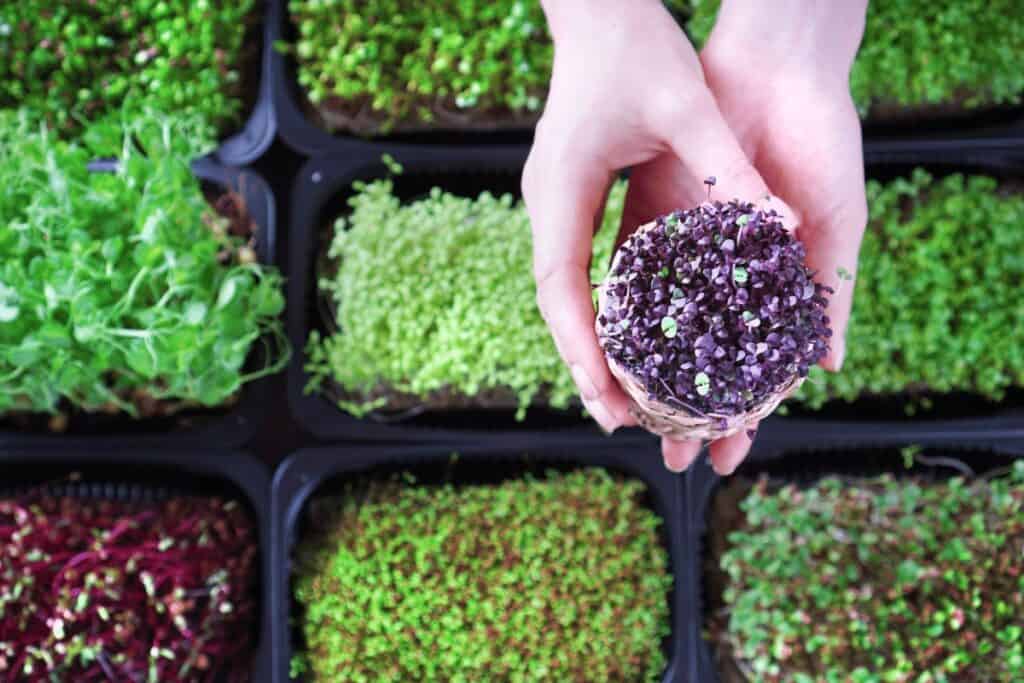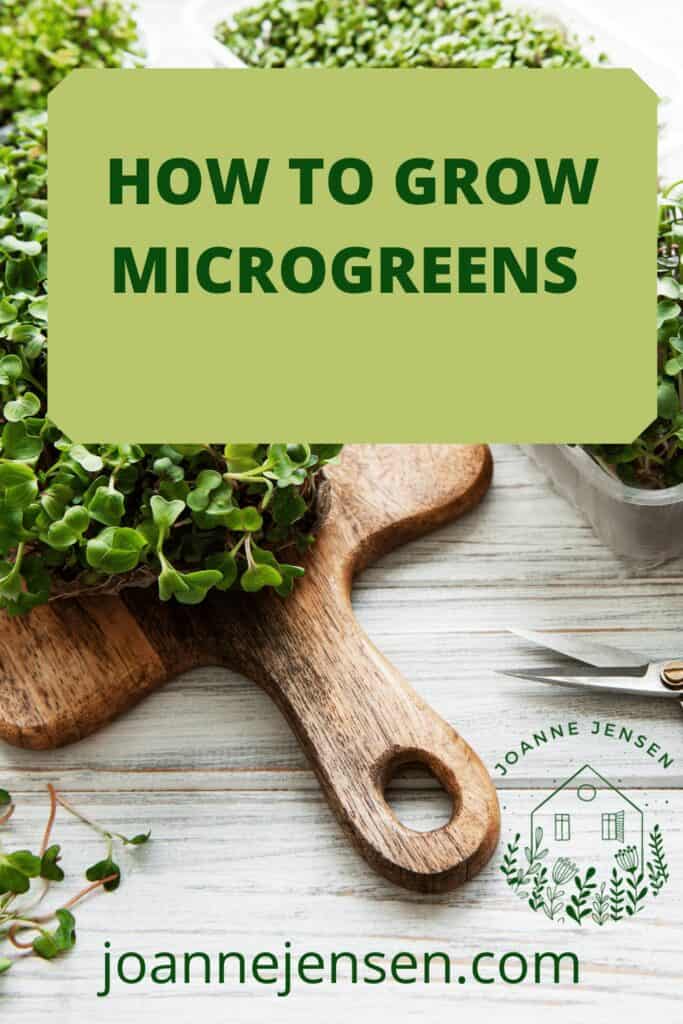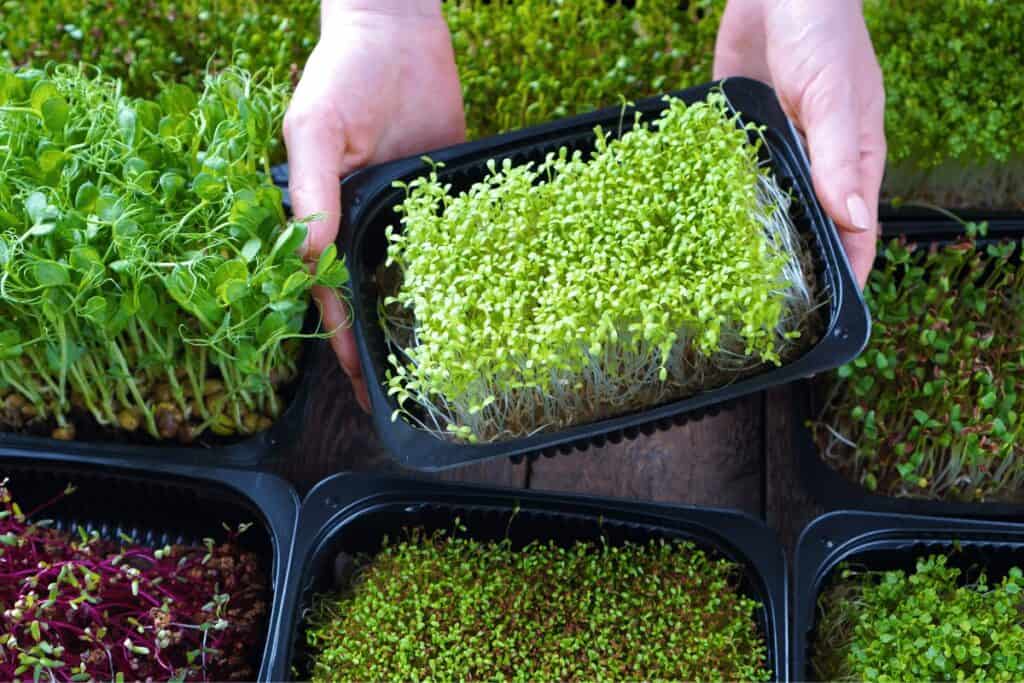If you’re new to the world of microgreens, then you may be wondering how to get started. One of the most important things to know is how to soak your seeds properly. Soaking your seeds before planting them is crucial, as it helps them germinate and grow correctly.
In this blog post, Soaking Microgreen Seeds (What You Should Know), we will discuss the benefits of soaking your microgreen seeds, and we will also provide some tips on how to do it correctly!
Soaking your seeds is important because it helps them to germinate and grow correctly. When you soak your seeds, the water penetrates the seed coat, which allows the embryo to start growing. Soaking also helps to break down hard-to-digest substances in the seed, such as phytic acid. This makes it easier for the plant to absorb nutrients from the soil once it starts growing.
There are a few things that you need to keep in mind when soaking your microgreen seeds. First of all, make sure that you use room-temperature water – hot water can damage the seeds.
You should also make sure that the water is deep enough so that the seeds are fully submerged. If possible, try to soak the seeds for at least 12 hours. Soaking them for longer will not hurt them, and in fact, may even give you better results.

Once your seeds are fully soaked, it’s time to plant them! Make sure to use good quality potting soil, and be careful not to pack the soil too tightly around the seeds. You should also keep the soil moist but not wet – over-watering can kill your plants. Finally, make sure that your seedlings get plenty of sunlight!
Soaking microgreen seeds is an important step in growing healthy plants. By following these tips, you can ensure that your seeds will germinate properly and grow into strong plants.
Peas, beets, chard, and other veggies are all high in preventative chemicals. It’s an inhibitor, so you want to make sure you soak it long enough for it to be fully diluted so the seed will germinate.
Larger seeds are more typical. Nasturtiums, pea tendrils, and sunflowers are examples of plants that are soaked. To induce them to split open, they must first be softened by the water.
Otherwise, even if the seed tries to germinate, it will not be able to do anything since it is confined within its hull. You may get 10% or more without soaking, but with a good soak, you’ll almost certainly obtain at least 95%.
Tiny seeds such as those of Red Garnet or Amaranth, Broccoli, Mustard, and Kale do not need to be soaked. Basil seeds should never be soaked because they will expand into gelatinous pearls when wet and tend to stick together in clumps if planted too closely together.
How Long Should You Soak Microgreen Seeds?

Soaking microgreen seeds is a process that is often recommended prior to planting. The length of time you should soak the seeds will depend on the type of microgreen you are planting.
For instance, broccoli and kale microgreens typically need to be soaked for 12-24 hours, while wheatgrass and sunflower microgreens only need to be soaked for a few hours.
The main benefit of soaking microgreen seeds is that it helps to soften the seed coat, which makes it easier for the seed to germinate. Soaking also helps to flush out any toxins that may be present on the seed surface. This is important, especially when planting young and delicate microgreens, as they are more susceptible to pests and diseases.
Soaking microgreen seeds can also help to improve their growth rate and overall yield. So if you’re looking to get the most out of your microgreen crop, be sure to soak those seeds
What Happens if You Soak Seeds Too Long?
Soaking the seeds too long can make them susceptible to fungal contamination. Excess water on the seed can also start the germination process, which if continued can lead to mold growth.
The seed coat will also soften, making it easier for bacteria and fungus to penetrate. Soaking times should be kept short in order to avoid these problems.
If you are using organic seeds, then soaking is not necessary. Soaking can actually deplete the seed of its nutrients. Organic seeds have a hard outer coat that protects them from pests and pathogens. Soaking will soften this coat and make the seed vulnerable to infection.
If you are using non-organic seeds, then it is recommended that you soak them in water for 12 hours before planting. This will help to remove any pesticide residue on the seed surface. Soaking also helps to activate the dormant embryo inside the seed, which will help with germination.
How Do You Disinfect Microgreen Seeds?
Soaking your seeds in a 10% bleach solution for about 10 minutes should do the trick. Be sure to rinse them off really well before planting.
What Seeds Should Not Be Soaked Before Planting?
Some seeds should not be soaked before planting because they will not germinate if they are wet. These seeds include beans, corn, cucumbers, melons, pumpkins, squash, and tomatoes. Soaking these types of seeds will actually kill them.
Also avoid soaking small seeds such as lettuce, radish, and so on. Germination of these species often doesn’t need a lot of help, and wet seeds are much more difficult to handle, leading to over-sowing and waste.

Below Is a Table that Lists the Seeds If They Require Pre-Soaking
| Seed Type | Soaking Requirement | Soaking Period |
| Alfalfa Seeds | No | NA |
| Amaranth Red Seeds | No | NA |
| Arugula or Rocket Seeds | No | NA |
| Broccoli Rabe Seeds | No | NA |
| Cabbage Red Seeds | No | NA |
| Cilantro or Coriander Seeds | Yes | Overnight |
| Daikon Radish Seeds | No | NA |
| Fenugreek Seeds | Yes | Min 4 hours or overnight |
| Basil seeds | No | NA |
| Green Pea Seeds | Yes | Overnight |
| Kale Seeds | No | NA |
| Kohl Rabi Seeds | No | NA |
| Mustard Seeds | No | NA |
| Pak Choi | No | NA |
| Speckled Pea Seeds | Yes | Overnight |
| Spinach Seeds | Yes | 4-5 hours |
| Sunflower Seeds | Yes | Overnight |
| Swiss Chard or Silverbeet Seeds | Yes | 4-5 hours |
| Yellow Pea Seeds | Yes | Overnight |
Conclusion

Taking the time to soak your microgreen seeds before planting them is an important step that can help increase their germination rates. If you’re not sure how long to soak them, we recommend soaking for at least 12 hours and up to 24 if necessary.
After they have soaked, rinse thoroughly with cold water and then plant as usual. You should also know that it’s best to use a bowl or pot of room temperature water when soaking rather than hot or cold tap water because this will keep the seeds from cracking during the process.
For more information on what else you need for successful microgreen growing, visit our blog post here
Latest Posts
- What Types of Lettuces Can You Grow?

- How to Plant Onion Seeds for Maximum Germination

- How to Plant Parsnip Seeds for Maximum Germination

- How to Plant Mushroom Seeds for Maximum Germination

- How to Plant Lettuce Seeds for Maximum Germination

- How to Plant Kale Seeds: A Step-by-Step Guide to Maximum Germination Success!





